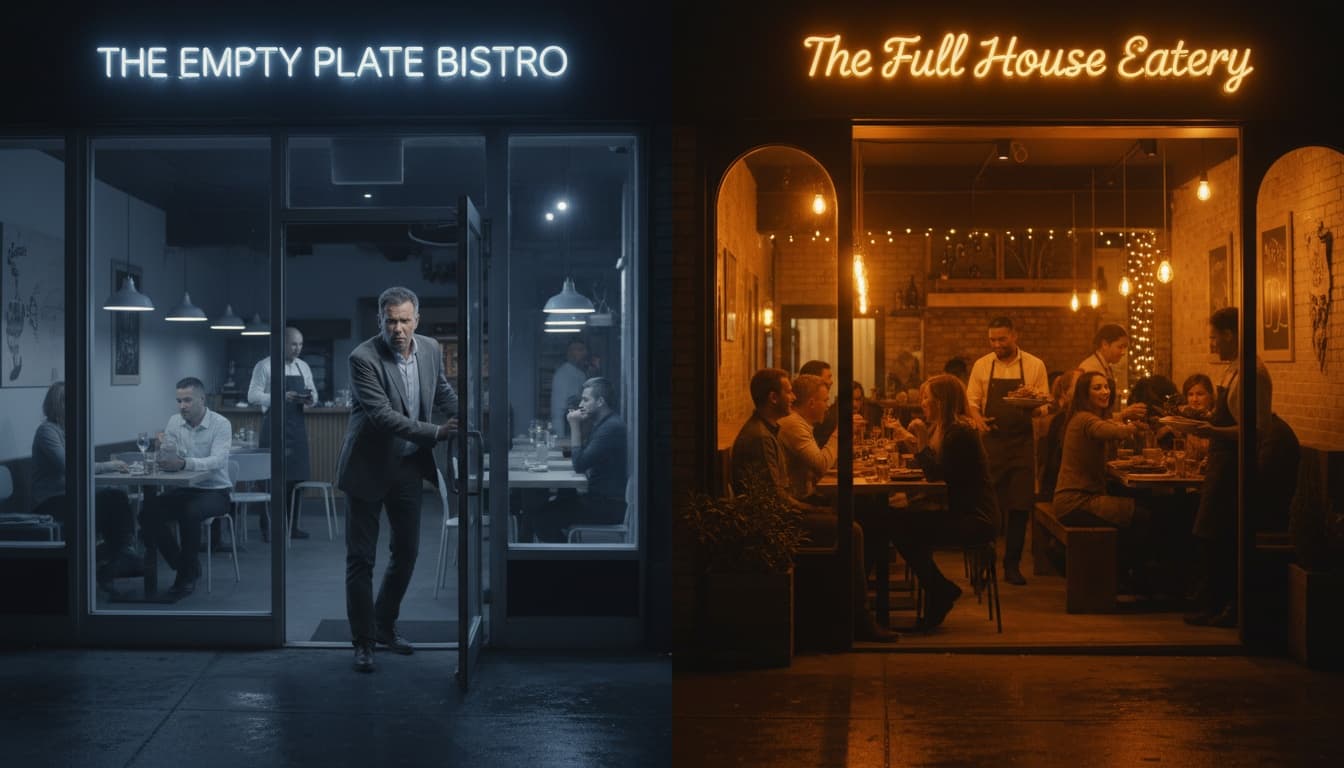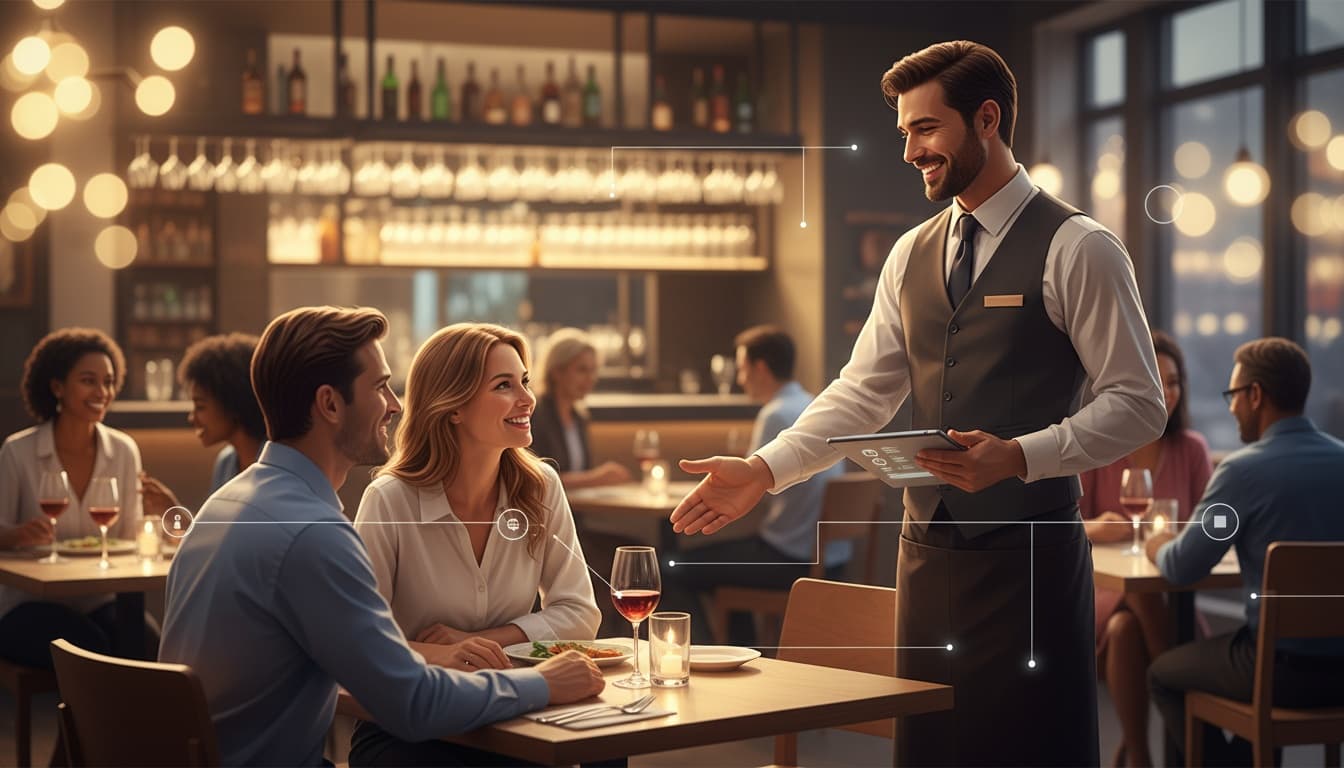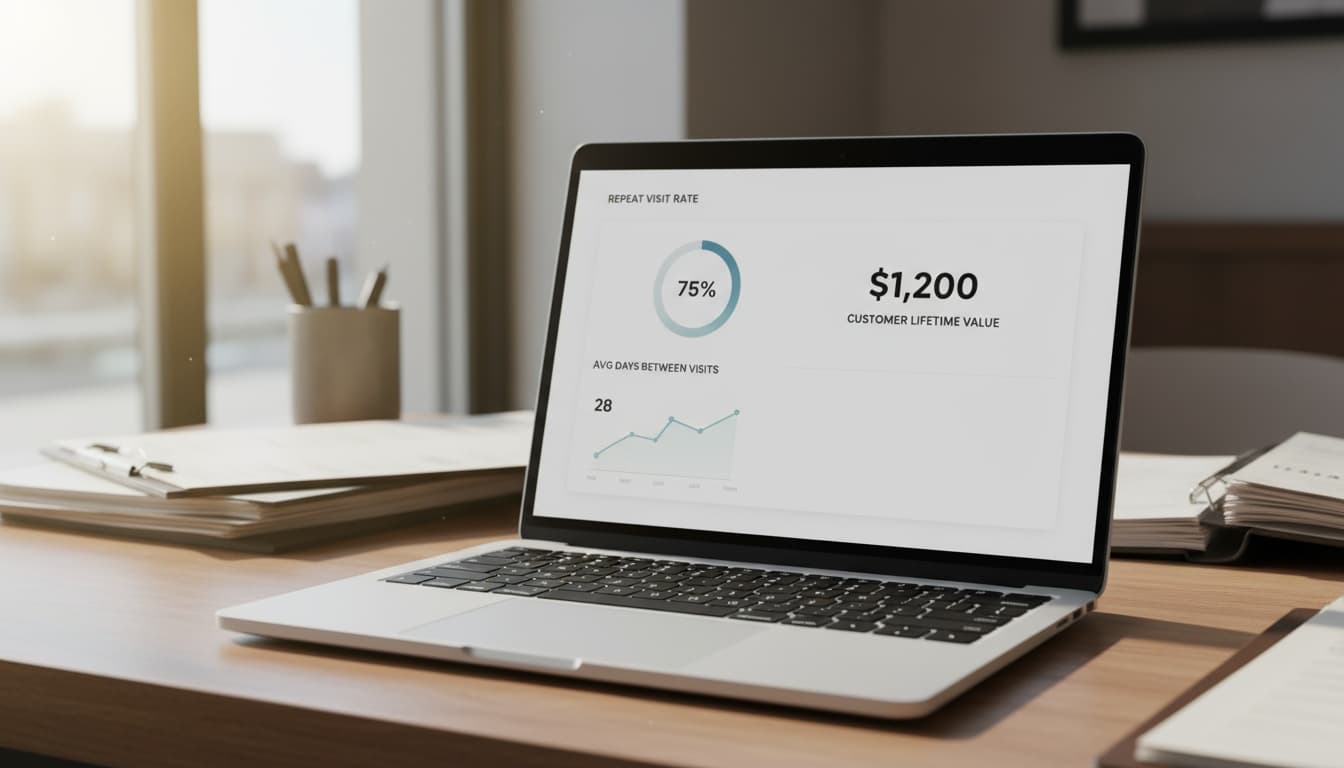The average restaurant spends $40–60 to acquire a new customer through ads, delivery platforms, and promotions. Yet most first-time guests never return. That is not just a marketing problem; it is a unit economics problem. A guest who visits twice per month and spends $32 per visit generates around $768 in yearly revenue. With a 65% gross margin, that single regular is worth roughly $499 in annual profit. Lose that guest and you may need a dozen new, low-loyalty guests to replace the same profit, before even counting acquisition costs.
Multiple studies show that increasing customer retention by just 5% can raise profits anywhere between 25% and 95%, because loyal guests visit more often, spend more, and refer others. The restaurants that win long term treat retention as a designed system, not an accident. They engineer every touchpoint to make coming back feel easy, obvious, and rewarding.
Why Customers Do Not Return to Restaurants

Very few guests will tell you, “I am not coming back.” They simply disappear and choose somewhere else next time. Understanding the real reasons behind that silence is the first step in fixing your repeat-visit problem.
Service inconsistency creates uncertainty
Guests build a mental benchmark on their first visit. If the first experience is fast, friendly, and well-coordinated, that becomes the standard in their mind. When the second visit starts with a slow greeting, missed drinks, or confused checks, trust breaks. People prefer a consistently “good enough” place over a restaurant that sometimes feels amazing and sometimes feels chaotic. Service speed, accuracy, tone of voice, and problem resolution all feed into that sense of reliability.
Poor first impressions eliminate second chances
Restaurant experiences are emotional and immediate. Long waits with no explanation, cold or overcooked food, dirty restrooms, or staff who look annoyed feel personal. For many guests, one bad first visit is enough to remove a restaurant from their mental list for months. Unlike e-commerce, they rarely send an email or ask for a refund; they simply choose a different place for the next occasion.
Lack of memorable differentiation
If guests cannot clearly explain what makes your restaurant special, you end up competing mostly on convenience and price. A generic Italian restaurant with a standard menu, similar décor, and average service is interchangeable with every other Italian option within a short driving radius. Real differentiation can come from a signature dish, a specific vibe, a clear story, or a unique service ritual—but it needs to be obvious to a first-time guest without any explanation.
No follow-up communication or recognition
Many restaurants collect email addresses, phone numbers, or loyalty sign-ups and then never use them in a structured way. Guests visit, spend money, and leave—and nothing happens afterward. When they come back, nobody recognizes them, remembers their preferences, or acknowledges their loyalty. They feel like a transaction, not like a relationship.
Perceived value discrepancy
Perceived value is about the entire experience, not just menu prices. If a $28 entrée feels similar in quality to a $19 option elsewhere, guests will need more reasons to return: better service, stronger atmosphere, smoother experience, or some unique element that justifies the extra cost. When food, service, and ambiance do not clearly match the price and time investment, people quietly start testing alternatives.
Core Strategies to Increase Repeat Visits

Turning first-time diners into regulars is not about one magic campaign. It is about stacking multiple small systems that make the next visit more likely than trying somewhere else.
Improve first-visit experience design
Design the first visit around three critical memory points: arrival, peak moment, and departure. At arrival, hosts should acknowledge guests within 30 seconds, give realistic wait-time estimates, and offer water or menus if there is a delay. That alone lowers stress and sets expectations.
During the peak moment—often the ordering and first bites—servers should guide guests with specific, confident recommendations. When someone asks what is good, “Our braised short ribs are a signature; they are slow-cooked for eight hours and pair really well with our house-made focaccia” builds far more trust than “Everything is good.”
At departure, use the peak-end rule: people remember the end of the experience disproportionately well. A simple personal thank you, a quick question about how everything was, and a hint about something worth returning for (new menu, seasonal dish, event) helps anchor the idea of a next visit.
Implement strategic follow-up within 24–72 hours
The window right after the first visit is where habits start to form. Follow up within 24–72 hours, while the memory is still fresh, with a short message that includes three elements: genuine thanks, a quick link for feedback or review, and a clear reason to come back soon.
For example: “Thank you for dining with us last night. We hope you enjoyed the salmon special. We would love your quick feedback, and you can enjoy a complimentary appetizer on your next visit within the next two weeks.” Email works well for context and storytelling; SMS is stronger for short, time-sensitive offers.
Use your POS or CRM data to test different timings and incentives for different segments. Families, business diners, and date-night customers may react differently to various messages and time windows.
Design smart offers and incentives that drive behavior
Not all promotions are equal. Generic “20% off” offers are easy to understand but they quietly train guests to wait for discounts and compress margins. Smarter offers push specific behaviors you want more of: trying the new menu, visiting in a slower daypart, or increasing average check size.
Examples that preserve margin while driving behavior:
- Complimentary appetizer when you try the new seasonal menu within 10 days.
- Spend $40 today and get $10 off your next visit within 30 days.
- Free dessert for tables that book midweek dinner online.
Threshold-style offers such as “$5 off $25” usually represent a reward cost in the 4–8% range of the check while still feeling meaningful to guests. Track your effective reward cost and make sure it stays sustainable instead of drifting toward deep, frequent discounting.
Leverage customer data for meaningful personalization
Personalization does not require a massive tech stack. It requires discipline in capturing and using simple data points: what they ordered, preferred cooking style, typical party size, seating preference, and special dates like birthdays or anniversaries.
Adding a short note such as “likes window tables, prefers salmon medium-rare, usually orders wine by the glass” into your reservation or loyalty system is enough for staff to create a radically different experience next time. A greeting like “Welcome back, would you like your usual table by the window?” signals that the guest is known, not just another cover.
Use behavior-based segments in your communication: wine enthusiasts receive invites for tasting nights, families hear first about Sunday brunch upgrades, and corporate guests get information on private dining and set menus.
Build systematic loyalty without complex programs
Complex, gamified apps and multi-tiered programs can work for big chains, but they often confuse guests and staff in independent concepts. Start simpler: give regulars early access to new dishes, priority on reservations, surprise upgrades, or occasional “on the house” items after several visits.
For a structured program, design rewards that are achievable quickly. One common pattern is one point per dollar spent, with the first meaningful reward at 75–100 points. Visit-based systems can trigger rewards after 3–5 visits, with bigger benefits later. The goal is to prove that belonging to your program is worth it within the first month, not after a year.
Engineer menu and experience touches for return motivation
Regulars do not just return for calories; they return for specific experiences. Build a small set of signature items that become “their dish” and are hard to copy elsewhere. Support that with rotating seasonal specials or chef features that change every month or quarter so there is always something new to try.
Experience-wise, consider elements that guests cannot easily replicate at home: tableside preparation, visible open kitchen, rare ingredients, or curated wine and cocktail pairings. These touches give people a clear story to tell friends and a reason to choose your place again instead of experimenting randomly.
Train staff for retention-focused service
Staff are your most powerful retention engine. Train them not only on steps of service but also on micro-moments that create loyalty: remembering names and preferences, noticing special occasions without being told, and proactively fixing issues before guests complain.
Give servers clear authority to recover from problems in the moment: comp a dessert, replace a dish, or attach a small incentive card for the next visit. Track and celebrate actions that protect relationships instead of only measuring speed and table turns. When the team understands that lifetime value matters more than tonight’s check, their decisions change.
Build a Return Loop for the First 30 Days
The first 30 days after a guest's initial visit are critical. Either they mentally classify your restaurant as “one of my places” or they forget you. A simple, structured return loop prevents that opportunity from being wasted.
Days 1–3: Immediate engagement
Send a short thank-you message within 24–72 hours. Reference something specific from their visit if possible, ask for quick feedback, and attach a light incentive with a near-term expiry (for example, two weeks). The goal is to anchor the idea of a second visit soon, not sometime in the distant future.
Days 7–10: Value-added communication
Share content that reinforces your positioning: a short story about your chef, behind-the-scenes ingredient sourcing, or upcoming experiences like wine dinners or live music. At this stage, avoid pushing offers too aggressively; focus on building brand affinity and staying top-of-mind when they plan the next meal out.
Days 14–17: Targeted return invitation
Send a more personalized offer based on what they ordered or how they visited. Guests who ordered bottles of wine can receive early access to a pairing menu; families can receive information about kids-eat-free or brunch deals; date-night guests might be invited to a themed menu or event. Relevance increases the chance that the message turns into a booking.
Days 21–25: Social proof and community building
Share testimonials, user-generated photos, press mentions, or stories about your role in the local community. Include optional links to follow your social channels or join a newsletter for ongoing updates. The goal is to make guests feel that choosing you is aligned with something bigger than a single meal.
Days 28–30: Retention assessment and segmentation
At the end of the first month, check who has returned and who has not. Guests who returned at least once can enter an ongoing loyalty track optimized for frequency and average check size. Guests who have not returned may need a stronger “last nudge” offer or a direct personal invitation before you classify them as lost and stop pushing hard promotions.
How to Measure Repeat-Visit Performance

You cannot improve what you do not measure. Retention metrics turn repeat visits from a vague goal into something concrete you can manage.
Core performance indicators
Repeat-visit rate: Measure what percentage of first-time guests return within 30, 60, and 90 days. Segment by acquisition channel (delivery platforms, paid ads, organic search, referrals) to see which channels bring the most loyal guests, not just the most covers.
Average visit interval: Track the number of days between visits for each guest, then compute:
Average visit interval = total days between all repeat visits ÷ number of repeat-visit instances
Shorter intervals indicate stronger habits. If intervals are growing, guests are drifting away and may need reactivation campaigns.
Customer lifetime value (CLV): Over a 12-month window, estimate:
CLV = average spend per visit × average number of visits per year × average customer lifespan (in years)
Compare CLV across loyalty members versus non-members, or across different acquisition channels. Use this to justify investments in retention programs, staff training, and better guest data.
Advanced analytics approaches
Once the basics are in place, you can apply more advanced techniques:
- Create cohorts based on first-visit month and track their behavior over 3, 6, and 12 months.
- Run A/B tests on different follow-up cadences or offers, measuring which variant generates more second visits and higher CLV.
- Monitor open, click, and redemption rates across email and SMS campaigns to refine your messaging.
The goal is not to overcomplicate your reporting, but to have enough visibility to see which efforts actually move repeat visits up and which are just noise.
Common Mistakes Restaurants Make
Focusing solely on discounts instead of value creation
Heavy, frequent discounts are an easy lever to pull when traffic is slow, but they are dangerous if used as the main retention tool. Guests quickly learn to wait for a deal, and your pricing integrity erodes. True loyalty comes from a combination of value, experience, recognition, and convenience—not just lower prices.
Overcomplicating loyalty programs and communications
If staff cannot explain how your loyalty program works in one clear sentence, it is probably too complex. Multi-tier structures, confusing point conversions, and shifting rules all reduce adoption. Simpler is better: clear earning rules, clear rewards, and a visible path to the next benefit.
Neglecting staff training and empowerment
Many restaurants invest in software before investing in staff behavior. Without training and empowerment, there is no one to create human moments that keep people coming back. Service recovery, personal recognition, and “we fixed it before you had to ask” experiences depend on well-trained, trusted staff.
Treating all customers identically
Sending the same offer to every guest, regardless of how often they visit or what they value, is efficient but not effective. High-frequency regulars, birthday-only visitors, corporate groups, and delivery guests all respond to different messages. Even basic segmentation by visit frequency and average spend can produce far better results with the same marketing effort.
Ignoring the economics of retention programs
Loyalty programs sometimes “work” for traffic but fail for profit. If your effective reward cost creeps above 10–12% of member sales, you may be buying short-term volume at the expense of long-term viability. Healthy programs usually sit in the 4–8% range, with stronger economics driven by higher frequency and check size, not just by discounts.
Building Long-Term Retention Systems
Customer retention turns a restaurant from a purely transaction-driven business into a relationship-driven one. Instead of starting from zero every month, you build a base of guests who already trust you, who plan key moments with you, and who recommend you to their networks.
The most successful operators treat repeat visits as a product they build, not a side effect they hope for. They standardize first-visit experiences, design follow-up flows, create smart offers, train staff around relationships, and measure the right metrics. Over time, that system compounds. While competitors burn budget chasing new guests, retention-focused restaurants grow through a core of loyal regulars who make the numbers work in good times and bad.
Turn first-time guests into loyal regulars
VISU helps restaurants transform QR codes and touchpoints into smart campaigns that capture data, reward repeat visits, and make every interaction measurable. Instead of guessing who will come back, you build a clear return loop powered by engagement and rewards.

